
The Blaster Learning System is an educational video game series created by Davidson & Associates and later published by JumpStart after the two companies were acquired and merged by CUC Software. The games primarily focused on mathematics, later expanding into language arts and science, and spawned an animated children’s television series in 1999 called Blaster's Universe.

The Miracle Piano Teaching System is educational software which uses a MIDI keyboard to teach how to play the piano. It was published in 1990 by The Software Toolworks for the Nintendo Entertainment System, Super NES, Macintosh, Amiga, Sega Genesis, and MS-DOS compatible operating systems.
The Print Shop is a desktop publishing software package originally published in 1984 by Broderbund. It was unique in that it provided libraries of clip art and templates through a simple interface to build signs, posters and banners with household dot-matrix printers. Over the years, the software has been updated to accommodate changing file formats and printer technologies.

Mizuko Itō, sometimes known as Mimi Ito, is a Japanese cultural anthropologist and learning scientist. She is Professor in Residence and John D. and Catherine T. MacArthur Chair in Digital Media and Learning, and Director of the Connected Learning Lab in the Department of Informatics, Donald Bren School of Information and Computer Sciences at the University of California, Irvine. Her main professional interest is young people's use of media technology. She has explored the ways in which digital media are changing relationships, identities, and communities.
Peggy Weil is an American artist working in digital media.
Edu-Ware Services, Inc. was an educational and entertainment software publisher established in 1979 by Sherwin Steffin and Steven Pederson. It was known for its adventure games, role-playing video games, and flight simulators for the Apple II series of computers.
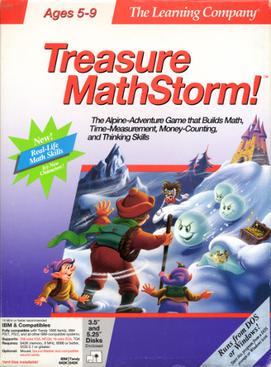
Treasure MathStorm! is an educational computer game intended to teach children ages five to nine mathematical problem solving. This sequel to Treasure Mountain! is the sixth installment of The Learning Company's Super Seekers games and the second in its "Treasure" series.

OutNumbered! is an educational video game published by The Learning Company in 1990 for both Windows and Macintosh PCs. It is aimed at children ages seven to fourteen and is designed to teach children mathematical computation and problem solving skills.

Pac-Man is a 1982 maze video game developed and published by Atari, Inc. under official license by Namco, and an adaptation of the 1980 arcade game Pac-Man. The player controls the title character, who attempts to consume all of the wafers in a maze while avoiding four ghosts that pursue him. Eating flashing wafers at the corners of the screen causes the ghosts to temporarily turn blue and flee, allowing Pac-Man to eat them for bonus points. Once eaten, a ghost is reduced to a pair of eyes, which return to the center of the maze to be restored.
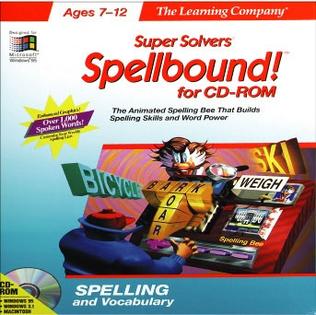
Spellbound! is an educational computer game made and distributed by The Learning Company aimed at teaching spelling, vocabulary, and language development to children ages 7 to 12 years. The objective of the game is to play spelling-related games to qualify and compete for successively higher bracket spelling bees, concluding with the player competing in the national spelling bee. The original game, released in 1991, was compatible with computers running DOS 3.3 or higher. A 1993 CD release added spoken dialogue and was compatible with Windows 95 and Macintosh.
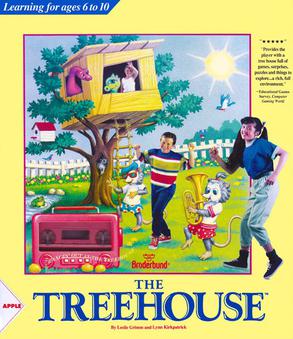
The Treehouse is an educational point-and-click personal computer game developed for DOS and then ported to Macintosh and the FM Towns, with Windows versions arriving later. Following the success of The Playroom, Broderbund created The Treehouse, which provides more content and furthers the user's ability to explore. First released in 1991, most copies were sold in educational supply stores rather than mainstream stores that sold computer software; it included a sing-along cassette tape. It was re-released in 1996 for Windows 3.1 and Windows 95. Although the Windows version has the same general activities, the characters, interface, and locations are different.
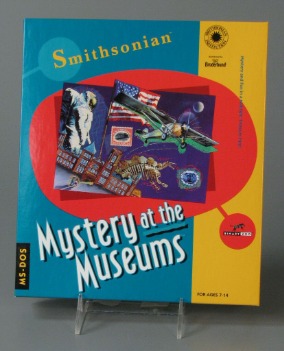
Mystery at the Museums is an educational video game developed by Binary Zoo Software and published by Artech Studios for MS-DOS in 1993. The game is Binary Zoo's second release as well as the second in their "Adventures With Edison" series.
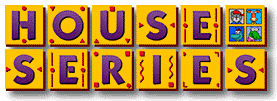
Early Learning House or simply the House Series is a collection of four main educational video games and two compilations for the Windows and Macintosh platforms, developed by Theatrix Interactive, Inc. and published by Edmark software. Each different game focuses on a particular major learning category with selectable skill settings for preschooler, kindergarten and elementary learners. Millie's Math House (1992) on mathematics, Bailey's Book House (1993) on language, Sammy's Science House (1994) on science, and Trudy's Time and Place House (1995) on history and geography. A spin-off, Stanley's Sticker Stories (1996), sees players create animated storybooks with the series' characters. Millie & Bailey Preschool and Millie & Bailey Kindergarten each contain the combined activities from two of the four software products. In addition the programs can be configured by an adult mode to suit students with special needs. Most of the activities in every game have two modes, one to allow learners to explore and try it out for themselves and the other for learners to follow specific tasks set by the game characters. Learners also have the option to print pictures of creative activities and record sounds in phonics activities. Later the games were re-developed by Houghton Mifflin Harcourt Learning Technology and re-published by The Learning Company with newer graphics and additional activities.

Math Rabbit is a 1986 video game spin-off from the Reader Rabbit edutainment series. It was made by The Learning Company for MS-DOS and Apple II series. A Deluxe version was released in 1993 for MS-DOS, Macintosh, and Windows 3.x. In 1997, the game was remade for Windows and Macintosh as Reader Rabbit's Math 1. The final remake for Windows and Macintosh in 1998 is Reader Rabbit's Math Ages 4-6, with a personalized version released in 1999.
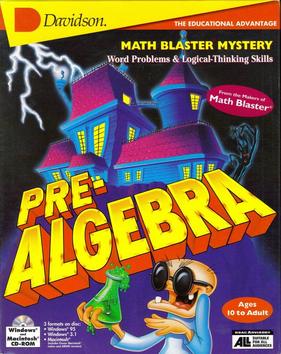
Math Blaster Mystery: The Great Brain Robbery is a product in a line of educational products created by Davidson & Associates that takes place in a different universe from the original Math Blaster. It has no relation to Davidson's earlier Apple II game Math Blaster Mystery. The game was released in North America, Sweden and Spain. The game was remade in 1998 with the title Math Blaster: Pre-Algebra. The game is regarded as a 'Review and Practice' type of software.

Math Blaster Jr. is a 1996 educational video game in the Blaster Learning System series aimed at teaching mathematics to children aged 4–8. The game was rebranded as Math Blaster: Ages 4-6 in 1997.
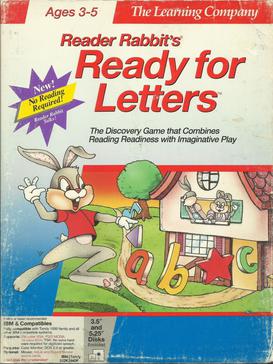
Reader Rabbit's Ready for Letters is a 1992 video game and the fifth game of the Reader Rabbit franchise. Although a spin-off title, it is designed for ages 3 to 6 to teach prereaders about becoming literate and phonics.

Star Wars Math: Jabba's Game Galaxy is an educational Star Wars game released by Lucas Learning in 2000 for Windows and Macintosh. The game used characters from The Phantom Menace to teach kids basic maths skills.

Math Blaster for 1st Grade is a 1999 educational video game in a line of educational products originally created by Davidson & Associates and continued by Knowledge Adventure. The game was re-released in 2000 as Math Blaster Mission 2.
















